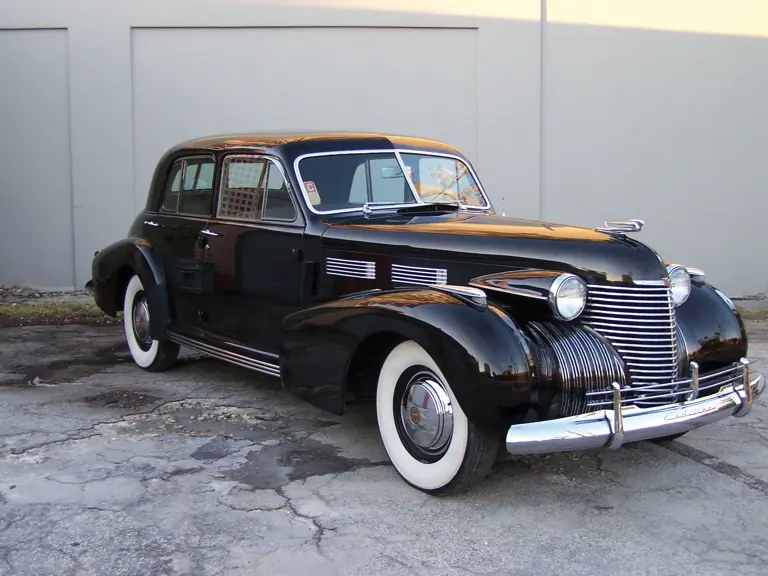 | Fort Lauderdale, Florida
| Fort Lauderdale, Florida
The first Series 60 Specials of 1938 were bodied by Fleetwood; the 1939 and 1940 models, which used essentially the same design with updated front-end sheet metal and headlights, were built to the Fleetwood design by Fisher Body, and they were no less well-appointed and elegant.
The Cadillac Series 60 Special marked a new direction for both the “Standard of the World” and General Motors design. It was the first car completely styled for GM by William Mitchell, the gifted protégé and eventual success of the redoubtable Harley Earl. Mitchell made his impression early with the first “owner-driver” Cadillac, a car for the gentleman or lady of means who preferred not to use a chauffeur. Accordingly, it rode on a 127-inch wheelbase chassis, somewhat smaller than other Cadillacs, but it was large enough to be appropriately cushy. The body boasted well-proportioned lines, hidden running boards, squared-off modern “pontoon fenders,” and a roofline that seemed to plunge between the windows. In total, the Series 60 Special looked fantastic and like modern art compared to the other luxury cars being built at the time.
With a history of being in a museum for more than a 40-year period, this Cadillac 60 Special is reported as an original example that is unrestored. Everything, including the clock, works properly. The 1940 model offered here is driven by a 346-cid, 135-hp overhead valve V-8 engine connected to a three-speed selective synchromesh manual transmission. The Cadillac’s Black finish and luxurious two-tone interior seem quite appropriate in conveying the overwhelming elegance that this model represented in period. Adding to the fashionable appearance are wide whitewall tires with full factory hubcaps, a grille guard and bumper overriders. Additional equipment includes a heater and roll-up divider window; only 110 of the 1940 60 Specials featured this divider window partition. There is a small crack in the lower left of the divider window. To add a nice historic touch, the original WWII gas ration "C" card is still displayed on the windshield which allowed an extra gas allowance and was for those doing "essential" work.
These were chauffeur driven autos with several uncommon features, such as the ignition key also operating the front door locks. The glovebox key also works the trunk, as well as a special door lock on the right rear door. There are no interior lights for the driver’s part of the car’s cabin. Only the right rear door works an interior light, which is located in the rear overhead; the left rear seat location has a switch to activate this light. Chauffeur accommodating vehicles often had no radio, as is true with this Cadillac.
This was the final year that any Cadillac model would be offered with side-mounted spares as an option; as a sign of the changing tastes of the car buying public, this particular car did not feature this final year extra.
Inside, the tasteful cloth seats and two-tone door panels remain in original condition and are said to be “perfect.” The painted dash, like the car itself, uses only a minimum of chrome to set off its design, and a classic large-diameter steering wheel instantly transports one to an age in which high tech did not dictate design. This car remains solid and eminently useable; and by being recognized as a Full Classic by the Classic Car Club of America, this icon of General Motors design would be a perfect tour car, especially for CCCA CARavans, where this most modern and drivable of Classics has long been a preferred favorite.





